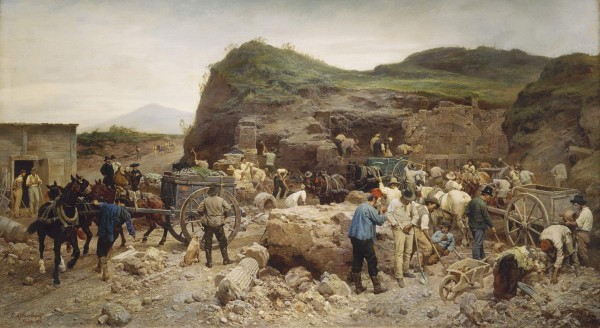The artist is Kovalevsky

From 1873 to 1876, the artist lived mainly in Rome. Here he carefully watched the surrounding life in search of the plot for his reporting picture. In 1875, he finally determined it for himself, deciding to portray the leveling of the environs of Rome to build new quarters. Extremely conscientious and demanding of himself, he performed hundreds of sketches and natural drawings, studying to the slightest detail the situation on excavations, the life of diggers, their clothes, guns, horse harnesses, carts, etc. D. And. N. Kramskoy wrote about Kovalevsky p. And. Tretyakova: “He bribes me with terrible conscientiousness and love for his work, he has no nerve, however, but knowledge and love – darkness (…)”.
Truthfully and naturally depicting Italian workers and employees, Kovalevsky distinguishes the types attracting his attention: a clever minister of horses, an energetic overseer, a tired digger with a tube lying near the concentrated people. As always, Kovalevsky perfectly wrote horses, which he did not cease to study with love all his life. The artist, who suffered the need, due to the need to constantly pay for nature, managed to complete his complex, huge multi-figure canvas due to material assistance m. M. Antokolsky.
The work brought the artist the title of academician and two gold medals – at world exhibitions in Paris (1878) and Berlin (1886).